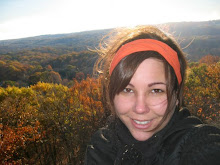Welcome to Past is Present, a place where I will discuss, ponder and present an assortment of issues regarding the history of photography and collecting, organizing and preserving various types of photographs.
Photography has been a passion of mine since the day my father gave me a Pentax K1000 35mm camera. Raised in a New Jersey suburb of Manhattan, I frequented New York City museums and galleries on a regular basis and found my biggest inspiration when I first viewed Robert Frank’s photographs from
The Americans. I received my Bachelor's degree in Art with an emphasis in Photography from the University of California, Santa Cruz in 1997. In 2007 I completed a two-year graduate program in Photographic Preservation and Collections Management and received my Master's degree from Ryerson University. Since early 2008, I have been working as a Collection Manager of Prints and Photographs at the Chicago History Museum where I have a wide range of tasks and responsibilities involving registrarial and collections management, processing, arranging and cataloging pictorial collection items.
I continue to take my own photos, only now with a digital camera, and organize the images into sets on my
Flickr page and the prints into a large volume of albums. I occasionally do graphic design work and am very experienced at digital photo restoration and re-touching. I collect photographs, primarily nineteenth century cartes de visite, cabinet cards, tintypes, ambrotypes, and (hopefully) daguerreotypes, as well as vintage snapshots and any old photos featuring American Staffordshire Terrier, Pit Bull, and other Bully dogs. Some of my other interests are mid-century modern design, lowbrow art, typography, Victorian lithography, natural curiosities, music, and film. I love perusing thrift stores, antique malls and flea markets, taking road trips, playing ping-pong, pool and Boggle, and organizing other people’s family photograph collections.
Stay tuned.































